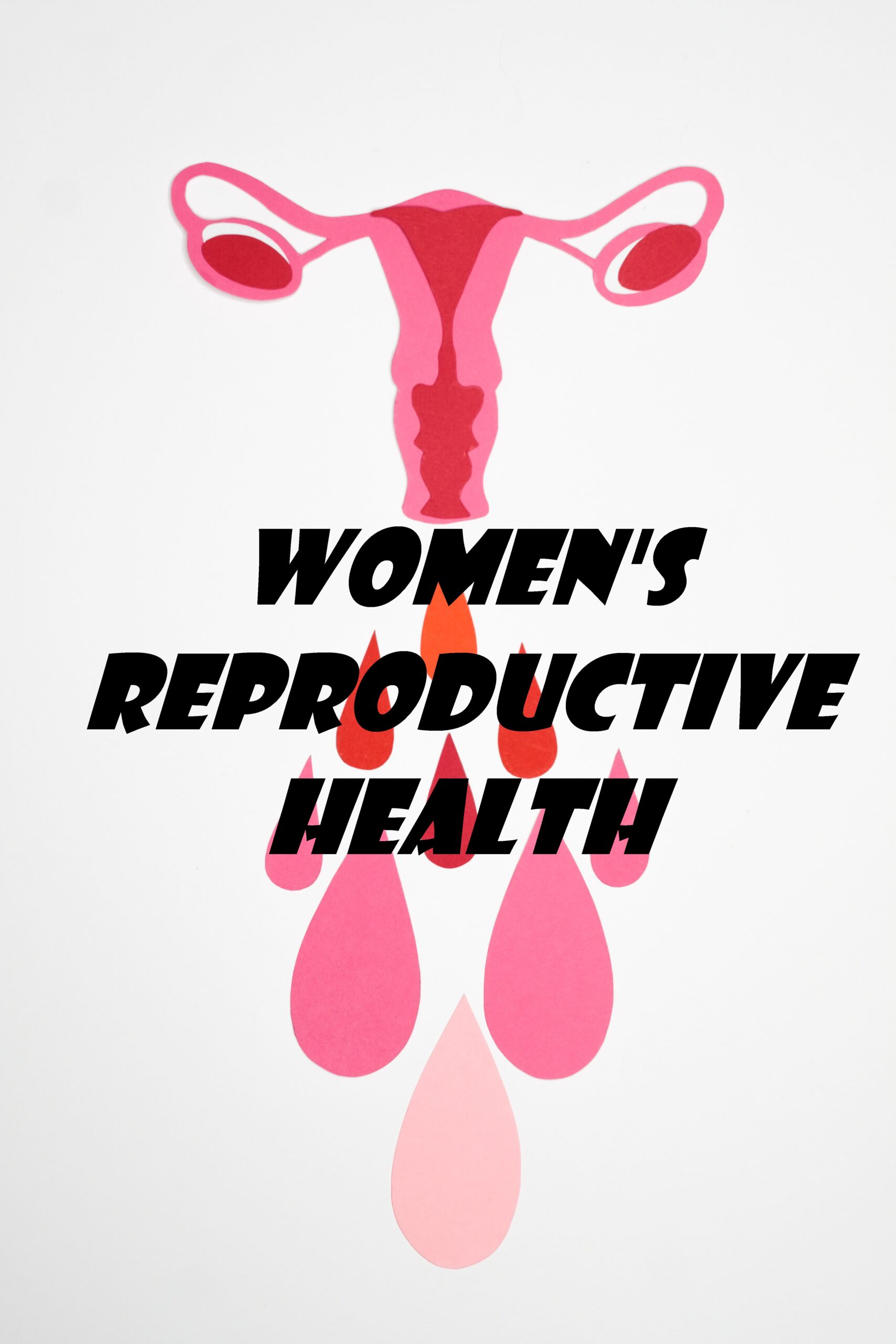Women’s Reproductive Health
***freeDIGIBOOK***Understanding Hair Loss: Causes, Prevention and Treatment
Understanding the Female Reproductive System
1. The female reproductive system is a complex and intricate system responsible for the production of eggs, fertilization, and pregnancy. Understanding the anatomy and physiology of the female reproductive system is crucial for maintaining reproductive health and understanding fertility and infertility.
The female reproductive anatomy is complex and includes both external and internal genitalia. Understanding the anatomy of the female reproductive system is important for women to maintain their reproductive health and to understand how their body works.
External genitalia, also known as the vulva, includes the labia majora, labia minora, clitoris, and vaginal opening. The labia majora are the outer folds of skin that cover the labia minora and clitoris. The labia minora are the inner folds of skin that protect the clitoris and vaginal opening. The clitoris is a small, highly sensitive organ located at the front of the vulva. The vaginal opening is the entrance to the vagina, which is where the penis is inserted during sexual intercourse.
Internal genitalia includes the ovaries, fallopian tubes, uterus, cervix, and vagina. The ovaries are two almond-shaped organs located on either side of the uterus that produce and release eggs during ovulation. The fallopian tubes are two thin tubes that extend from the uterus and connect to the ovaries. The eggs released from the ovaries travel through the fallopian tubes and towards the uterus. The uterus, also known as the womb, is a muscular organ that can expand to accommodate a growing fetus during pregnancy. The cervix is the lower part of the uterus that connects to the vagina. The vagina is a muscular tube that connects the cervix to the external genitalia.
It’s important for women to understand their reproductive anatomy and to be aware of any changes or abnormalities. Regular gynecological exams and screenings can help to detect potential issues early on, including infections, cysts, and tumors. Women can also perform self-examinations to check for any changes or abnormalities in their breasts and genitals.
In addition, understanding the anatomy of the female reproductive system is important for understanding fertility and infertility. For example, issues with ovulation or the fallopian tubes can affect a woman’s ability to become pregnant. By understanding the anatomy of their reproductive system, women can better understand their fertility and make informed decisions about family planning and reproductive health.
Overall, understanding the female reproductive anatomy is essential for maintaining reproductive health and for understanding fertility and infertility. By educating themselves on the anatomy of their reproductive system, women can take control of their reproductive health and make informed decisions about their reproductive and sexual health.
2. Discussing the female reproductive anatomy, including the external and internal genitalia. The external genitalia, or vulva, includes the labia majora, labia minora, clitoris, and vaginal opening. The internal genitalia include the ovaries, fallopian tubes, uterus, cervix, and vagina.
The female reproductive anatomy is complex and includes both external and internal genitalia. Understanding the anatomy of the female reproductive system is important for women to maintain their reproductive health and to understand how their body works.
External genitalia, also known as the vulva, includes the labia majora, labia minora, clitoris, and vaginal opening. The labia majora are the outer folds of skin that cover the labia minora and clitoris. The labia minora are the inner folds of skin that protect the clitoris and vaginal opening. The clitoris is a small, highly sensitive organ located at the front of the vulva. The vaginal opening is the entrance to the vagina, which is where the penis is inserted during sexual intercourse.
Internal genitalia include the ovaries, fallopian tubes, uterus, cervix, and vagina. The ovaries are two almond-shaped organs located on either side of the uterus that produce and release eggs during ovulation. The fallopian tubes are two thin tubes that extend from the uterus and connect to the ovaries. The eggs released from the ovaries travel through the fallopian tubes and towards the uterus. The uterus, also known as the womb, is a muscular organ that can expand to accommodate a growing fetus during pregnancy. The cervix is the lower part of the uterus that connects to the vagina. The vagina is a muscular tube that connects the cervix to the external genitalia.
It’s important for women to understand their reproductive anatomy and to be aware of any changes or abnormalities. Regular gynecological exams and screenings can help to detect potential issues early on, including infections, cysts, and tumors. Women can also perform self-examinations to check for any changes or abnormalities in their breasts and genitals.
In addition, understanding the anatomy of the female reproductive system is important for understanding fertility and infertility. For example, issues with ovulation or the fallopian tubes can affect a woman’s ability to become pregnant. By understanding the anatomy of their reproductive system, women can better understand their fertility and make informed decisions about family planning and reproductive health.
Overall, understanding the female reproductive anatomy is essential for maintaining reproductive health and for understanding fertility and infertility. By educating themselves on the anatomy of their reproductive system, women can take control of their reproductive health and make informed decisions about their reproductive and sexual health.
3. Let’s cover the menstrual cycle, which is the regular process of ovulation and menstruation that occurs in women of reproductive age. The menstrual cycle is regulated by hormones produced by the ovaries and the pituitary gland, and it lasts an average of 28 days. The chapter will cover the different phases of the menstrual cycle, including the follicular phase, ovulation, and the luteal phase.
The menstrual cycle is a complex process that occurs in women of reproductive age and is necessary for fertility. The menstrual cycle is regulated by hormones produced by the ovaries and the pituitary gland and lasts an average of 28 days. Understanding the different phases of the menstrual cycle is important for women to maintain their reproductive health and to understand their fertility.
The menstrual cycle is divided into three phases: the follicular phase, ovulation, and the luteal phase. The follicular phase is the first phase of the menstrual cycle and begins on the first day of menstruation. During this phase, the pituitary gland releases follicle-stimulating hormone (FSH), which stimulates the ovaries to produce follicles that contain eggs. The follicular phase lasts approximately 14 days.
The second phase of the menstrual cycle is ovulation, which occurs when a mature egg is released from the ovary and travels down the fallopian tube towards the uterus. Ovulation occurs approximately halfway through the menstrual cycle, around day 14 in a 28-day cycle. During ovulation, luteinizing hormone (LH) is released from the pituitary gland, triggering the release of the mature egg.
The final phase of the menstrual cycle is the luteal phase, which begins after ovulation and lasts until the start of the next menstrual cycle. During this phase, the ruptured follicle that released the egg develops into a structure called the corpus luteum, which produces progesterone. Progesterone prepares the lining of the uterus for implantation of a fertilized egg. If fertilization does not occur, the corpus luteum breaks down and hormone levels drop, leading to menstruation and the start of a new menstrual cycle.
Understanding the menstrual cycle is important for women to track their menstrual cycle and identify any irregularities or issues. Women can use menstrual tracking apps or calendars to track their menstrual cycle and identify any patterns or changes. Irregular menstrual cycles can be caused by a variety of factors, including stress, changes in weight, hormonal imbalances, and certain medical conditions. Identifying any irregularities in the menstrual cycle can help women to identify potential issues and seek medical advice if necessary.
In addition, understanding the menstrual cycle is important for understanding fertility and family planning. Women can use their knowledge of the menstrual cycle to identify their most fertile days and plan for pregnancy or contraception accordingly. By understanding the menstrual cycle, women can take control of their reproductive health and make informed decisions about family planning and reproductive health.
4. We will also discuss how hormones control the reproductive process, including the roles of estrogen, progesterone, follicle-stimulating hormone (FSH), and luteinizing hormone (LH). These hormones work together to regulate the menstrual cycle, ovulation, and pregnancy.
Hormones play a crucial role in the reproductive process, regulating various physiological processes such as the menstrual cycle, ovulation, and pregnancy. Understanding the roles of different hormones is important for maintaining reproductive health and understanding fertility and infertility.
Estrogen and progesterone are two hormones produced by the ovaries that play key roles in the menstrual cycle and pregnancy. Estrogen is responsible for the development and maintenance of female reproductive organs, the growth of the endometrial lining of the uterus, and the regulation of the menstrual cycle. Progesterone, on the other hand, prepares the uterus for implantation and pregnancy by thickening the endometrial lining and inhibiting ovulation.
Follicle-stimulating hormone (FSH) and luteinizing hormone (LH) are produced by the pituitary gland and regulate the menstrual cycle and ovulation. FSH stimulates the growth and development of follicles in the ovaries, which contain eggs, while LH triggers ovulation and the release of the mature egg from the ovary. LH also stimulates the production of progesterone by the corpus luteum during the luteal phase of the menstrual cycle.
During pregnancy, the hormone levels change dramatically to support the growth and development of the fetus. The placenta, which is the organ that nourishes the developing fetus, produces a hormone called human chorionic gonadotropin (hCG), which maintains the production of estrogen and progesterone and prevents menstruation. Other hormones such as oxytocin and prolactin also play important roles in pregnancy and breastfeeding.
Imbalances in hormones can lead to various reproductive health issues, such as irregular menstrual cycles, infertility, and polycystic ovary syndrome (PCOS). Hormonal imbalances can be caused by various factors, including stress, diet, weight changes, and certain medical conditions. Identifying hormonal imbalances and seeking medical advice can help to address reproductive health issues and improve fertility and overall reproductive health.
In summary, understanding how hormones control the reproductive process is essential for maintaining reproductive health and understanding fertility and infertility. By understanding the roles of different hormones, women can take control of their reproductive health and make informed decisions about family planning and reproductive health.
5. Also we will cover common reproductive health issues that can affect the female reproductive system, such as polycystic ovary syndrome (PCOS), endometriosis, and pelvic inflammatory disease (PID). Readers will learn about the symptoms and treatment options for these conditions.
Reproductive health issues can have a significant impact on a woman’s quality of life and fertility. Understanding common reproductive health issues that can affect the female reproductive system is important for women to identify potential issues and seek medical advice if necessary.
Polycystic ovary syndrome (PCOS) is a common hormonal disorder that affects women of reproductive age. It is characterized by the growth of small cysts on the ovaries, high levels of androgens (male hormones), and irregular menstrual cycles. Symptoms of PCOS can include irregular periods, acne, excessive hair growth, weight gain, and fertility problems. Treatment options for PCOS include lifestyle changes such as diet and exercise, hormonal birth control, and medications to regulate ovulation.
Endometriosis is a condition in which the tissue that normally lines the inside of the uterus grows outside of it, such as on the ovaries, fallopian tubes, and other organs in the pelvis. Symptoms of endometriosis can include severe menstrual pain, heavy bleeding, pain during intercourse, and fertility problems. Treatment options for endometriosis include pain management medication, hormone therapy, and surgery.
Pelvic inflammatory disease (PID) is an infection of the reproductive organs, usually caused by sexually transmitted infections (STIs) such as chlamydia or gonorrhea. Symptoms of PID can include pelvic pain, fever, abnormal vaginal discharge, and pain during intercourse. Treatment options for PID include antibiotics to clear the infection and surgery in severe cases.
In addition to these common reproductive health issues, other conditions such as uterine fibroids, ovarian cysts, and cervical dysplasia can also affect women’s reproductive health. Symptoms and treatment options for these conditions vary, and it’s important for women to seek medical advice if they experience any abnormal symptoms or changes in their menstrual cycle.
Overall, understanding common reproductive health issues that can affect the female reproductive system is essential for women to maintain their reproductive health and to seek medical advice if necessary. By educating themselves on these issues, women can take control of their reproductive health and make informed decisions about family planning and reproductive health.
6. Importance of regular gynecological exams and screenings for reproductive health. This includes pap tests, mammograms, and other tests that can detect potential reproductive health issues early on.
Regular gynecological exams and screenings are crucial for maintaining reproductive health and detecting potential issues early on. Women should start seeing a gynecologist for regular exams and screenings beginning at age 21 or when they become sexually active, whichever comes first. The chapter will discuss the importance of different types of gynecological exams and screenings.
Pap tests are one of the most important screenings for detecting cervical cancer. During a pap test, the doctor collects a sample of cells from the cervix and sends it to a lab for analysis. Pap tests can detect abnormal cervical cells early on, before they turn into cancer, and allow for early intervention and treatment. Women should start getting regular pap tests beginning at age 21 or within three years of becoming sexually active.
Mammograms are another important screening for women, particularly those over the age of 50. A mammogram is an x-ray of the breast that can detect potential breast cancer. Mammograms can detect breast cancer early on, before any symptoms are present, allowing for early intervention and treatment. Women should begin getting regular mammograms starting at age 50, or earlier if they have a family history of breast cancer.
Other tests that can be done during a gynecological exam include a pelvic exam, which involves checking the uterus and ovaries for any abnormalities or growths, and a clinical breast exam, which involves the doctor checking the breasts for any lumps or abnormalities.
Regular gynecological exams and screenings are also an opportunity for women to discuss any reproductive health concerns with their doctor. This includes issues such as irregular periods, heavy bleeding, painful periods, and other symptoms that may indicate a potential reproductive health issue. By discussing these concerns with their doctor, women can receive the necessary care and treatment to maintain their reproductive health.
In summary, regular gynecological exams and screenings are essential for maintaining reproductive health and detecting potential issues early on. By getting regular pap tests, mammograms, and other screenings, women can take control of their reproductive health and receive the necessary care and treatment to maintain their overall health and wellbeing.
7. Readers will have a comprehensive understanding of the female reproductive system, the menstrual cycle, and how hormones regulate reproductive health. This knowledge is important for maintaining overall reproductive health and understanding fertility and infertility.
Understanding the female reproductive system is essential for maintaining reproductive health and identifying potential issues early on. Women who understand their reproductive system are more likely to recognize any changes or abnormalities and seek medical advice if necessary. This can lead to early detection and treatment of reproductive health issues, improving the chances of successful treatment.
Understanding the menstrual cycle is also important for women to understand their fertility and make informed decisions about family planning. By tracking their menstrual cycle and identifying their most fertile days, women can plan for pregnancy or contraception accordingly. This knowledge can also help women to identify potential issues with ovulation or irregular menstrual cycles, which can affect their fertility.
Finally, understanding how hormones regulate reproductive health is important for women to understand the causes of reproductive health issues and their treatment options. For example, hormonal imbalances can lead to issues such as PCOS, which can affect fertility. Understanding the role of hormones in the reproductive process can help women to identify potential hormonal imbalances and seek medical advice if necessary.
In summary, a comprehensive understanding of the female reproductive system, the menstrual cycle, and how hormones regulate reproductive health is essential for maintaining overall reproductive health and understanding fertility and infertility. By educating themselves on these topics, women can take control of their reproductive health and make informed decisions about family planning and reproductive health.
8. An overview of the female reproductive system, including the anatomy of the reproductive organs, the menstrual cycle, and how hormones control the reproductive process.
The female reproductive system is a complex system responsible for the production and transport of eggs, fertilization, and pregnancy. Understanding the anatomy of the female reproductive system, the menstrual cycle, and how hormones regulate reproductive health is important for women to maintain their reproductive health and make informed decisions about family planning and reproductive health.
The female reproductive system includes both external and internal genitalia. The external genitalia, or vulva, includes the labia majora, labia minora, clitoris, and vaginal opening. The internal genitalia includes the ovaries, fallopian tubes, uterus, cervix, and vagina. The ovaries are responsible for producing and releasing eggs, while the uterus provides a space for the developing fetus during pregnancy.
The menstrual cycle is a regular process of ovulation and menstruation that occurs in women of reproductive age. The menstrual cycle is regulated by hormones produced by the ovaries and the pituitary gland, and it lasts an average of 28 days. The cycle is divided into three phases: the follicular phase, ovulation, and the luteal phase. During the follicular phase, follicle-stimulating hormone (FSH) stimulates the ovaries to produce follicles that contain eggs. During ovulation, luteinizing hormone (LH) triggers the release of the mature egg from the ovary. During the luteal phase, the ruptured follicle that released the egg develops into a structure called the corpus luteum, which produces progesterone to prepare the lining of the uterus for implantation of a fertilized egg.
Hormones play a crucial role in regulating the reproductive process, including the roles of estrogen, progesterone, FSH, and LH. These hormones work together to regulate the menstrual cycle, ovulation, and pregnancy. Estrogen and progesterone are two hormones produced by the ovaries that play key roles in the menstrual cycle and pregnancy. FSH and LH are produced by the pituitary gland and regulate the menstrual cycle and ovulation. Imbalances in hormones can lead to various reproductive health issues, such as irregular menstrual cycles, infertility, and PCOS.
Regular gynecological exams and screenings are important for maintaining reproductive health and detecting potential issues early on. Pap tests, mammograms, and other screenings can detect potential reproductive health issues early on, allowing for early intervention and treatment. In addition, regular gynecological exams are an opportunity for women to discuss any reproductive health concerns with their doctor and receive the necessary care and treatment.
In summary, understanding the female reproductive system, the menstrual cycle, and how hormones regulate reproductive health is essential for maintaining overall reproductive health and understanding fertility and infertility. By educating themselves on these topics and seeking regular gynecological exams and screenings, women can take control of their reproductive health and make informed decisions about family planning and reproductive health.





Thanks Abraham, let us know what you love about this site. What do you think about getting paid to post comments? Wish you all the best.
To succeed online and make your business profitable, there is a lot that you should learn. Online marketing covers a wide range of topics that you need to be acquainted with, Email Marketing, Social Media Marketing, Product Creation, effective marketing strategies so that they can earn the maximum profits, ensure that the potential user is qualified to generate the maximum income by internet marketing strategies.
I want looking at and I think this website got some genuinely utilitarian stuff on it! .
I simply wanted to write down a quick word to say thanks to you for those wonderful tips and hints you are showing on this site.
Hello! Someone in my Facebook group shared this website with us, so I came to give it a look. I’m enjoying the information. I’m bookmarking and will be tweeting this to my followers! Wonderful blog and amazing design and style.
Appreciation for really being thoughtful and also for deciding on certain marvelous guides most people really want to be aware of.